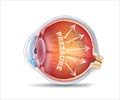Two research papers on fibrosis in the lung and liver and fibrotic signatures in glaucoma has been published by researchers.

‘A new software tool referred to as "Regeneration Intelligence" is aimed to identify robust biomarkers of fibrotic disease and develop effective targeted therapy.’





The two papers titled "Common pathway signature in lung and liver fibrosis" and "Pro-fibrotic pathway activation in trabecular meshwork and lamina cribrosa is the main driving force of glaucoma" were published in the journal of Cell Cycle. "Fibrosis is one of the age-related pathologies that disrupt organ functionality dramatically. Currently, there are no approved anti-fibrotic remedy and no reliable fibrotic biomarker. "Regeneration Intelligence" is an intelligent system that can detect hidden fibrotic molecular signatures based on a pathway network analysis. The system can identify specific fibrogenic molecular changes regardless of detecting platform and tissue of origin. Despite many efforts, fibrosis if often misdiagnosed. Our system is supposed to help with proper and timely diagnostic." said Eugene Makarev, VP of pathway analytics at Insilico Medicine.
With broad screening across multiple fibrotic organs, a platform developed by Insilico Medicine identified pathogenic pathways that served as potential targets for the anti-fibrotic therapy. This approach led to a selection of the list of small molecules and natural compounds by their ability to minimize the signaling pathway difference between a fibrotic and a healthy state of the tissue. Further work with 'Regeneration Intelligence' provides promising opportunities to identify conserved biological pathways that play a critical role in fibrosis development.
"We are very excited to continue our collaboration with Insilico Medicine. Using the innovative "Regeneration Intelligence" software, we have discovered previously-undetected pro-fibrotic signatures in glaucoma, based on pathway analysis. This new knowledge will allow Vision Genomics, Insilico Medicine and Howard University to cooperatively select and develop anti-fibrotic small molecule interventions to minimize or reverse this fibrotic state, and restore the tissue to normal function." said Antonei Csoka, CEO of Vision Genomics, Inc.
Source-Eurekalert















